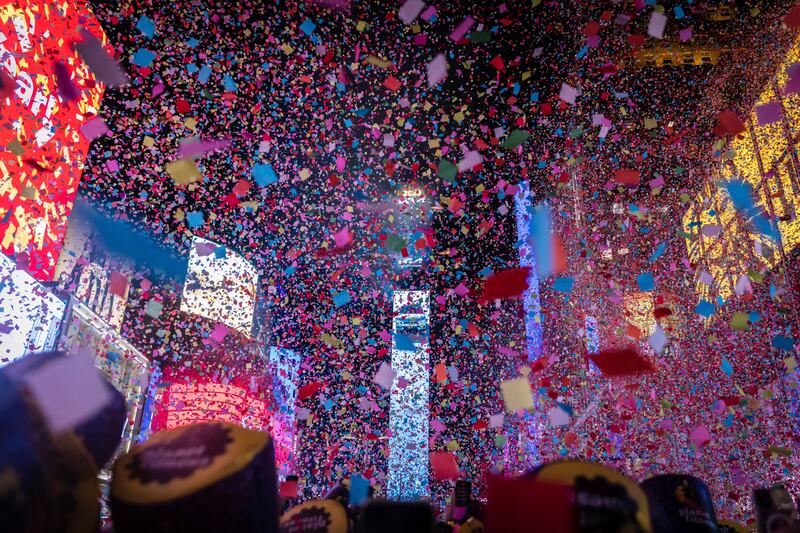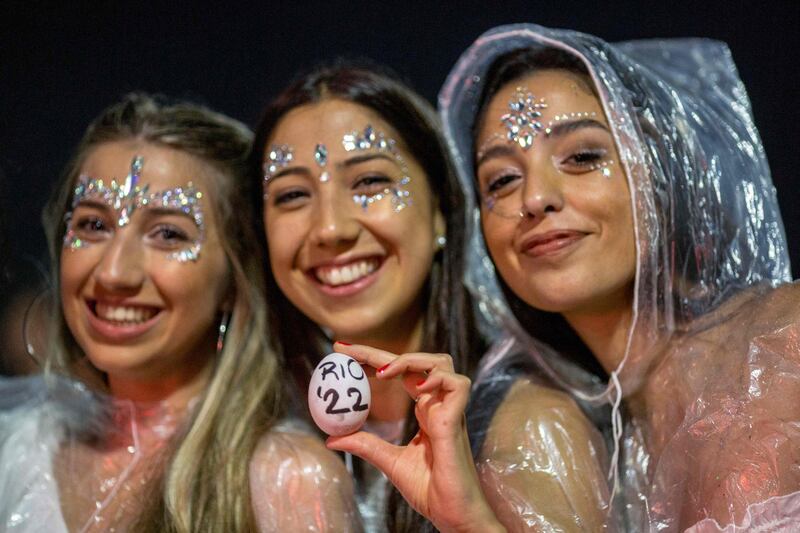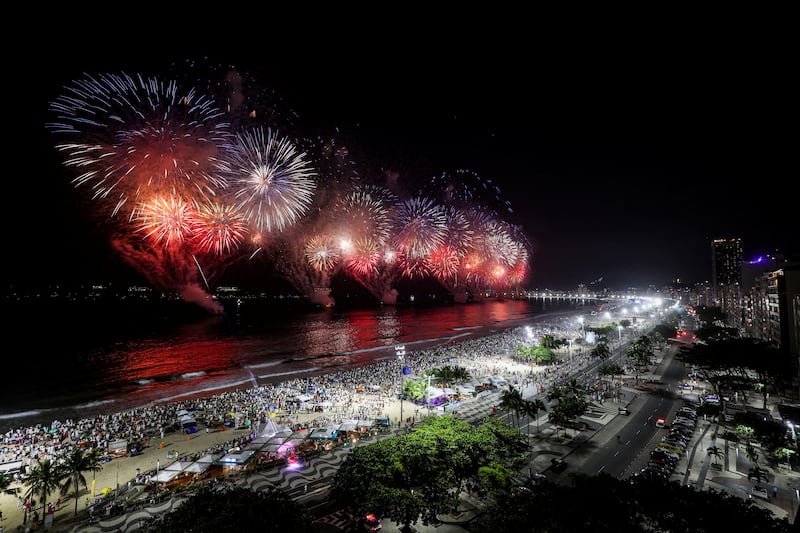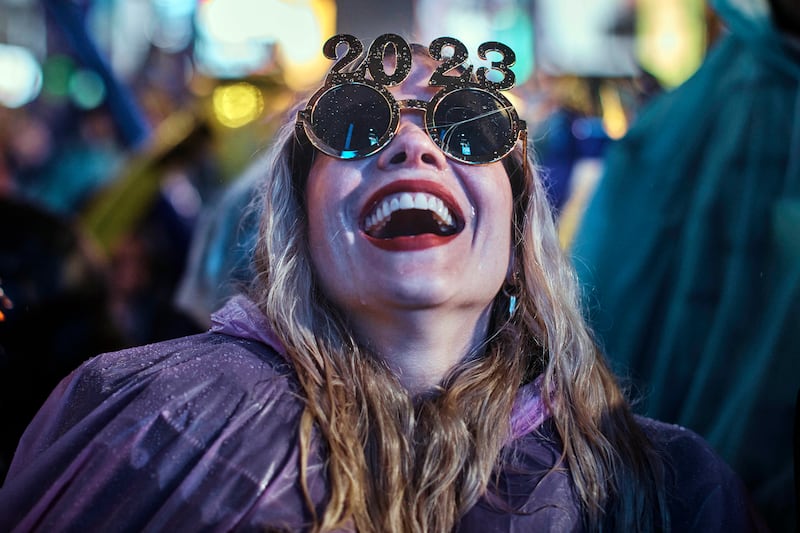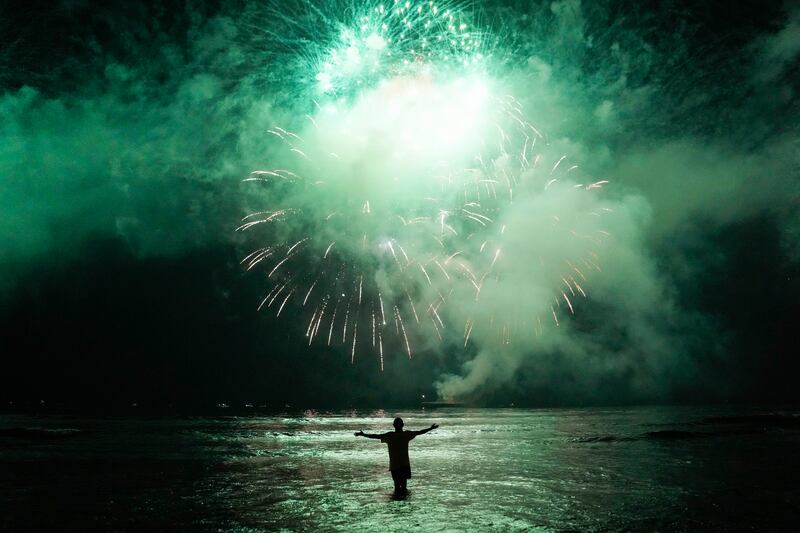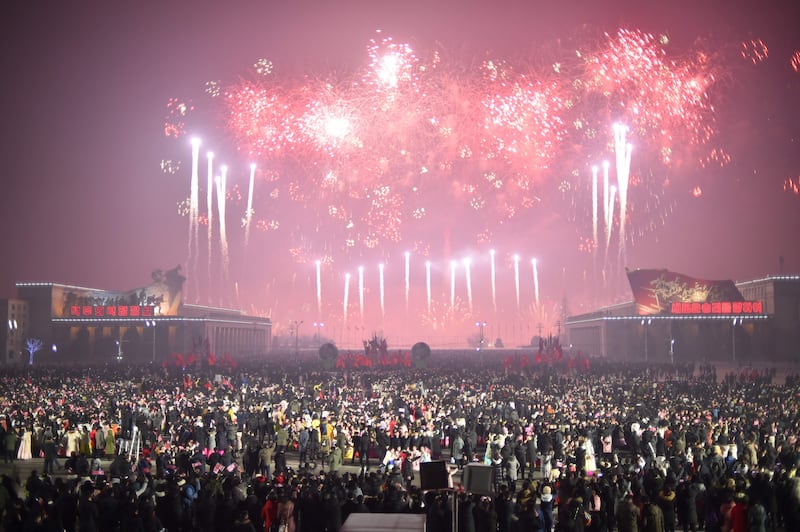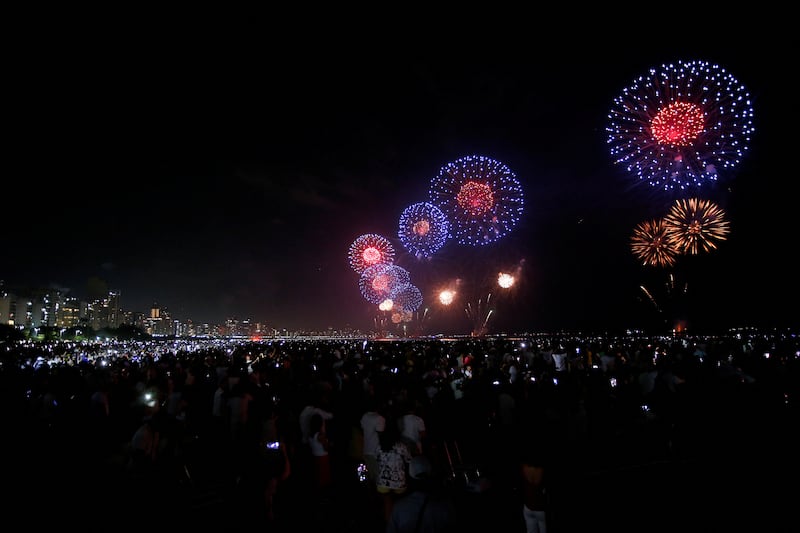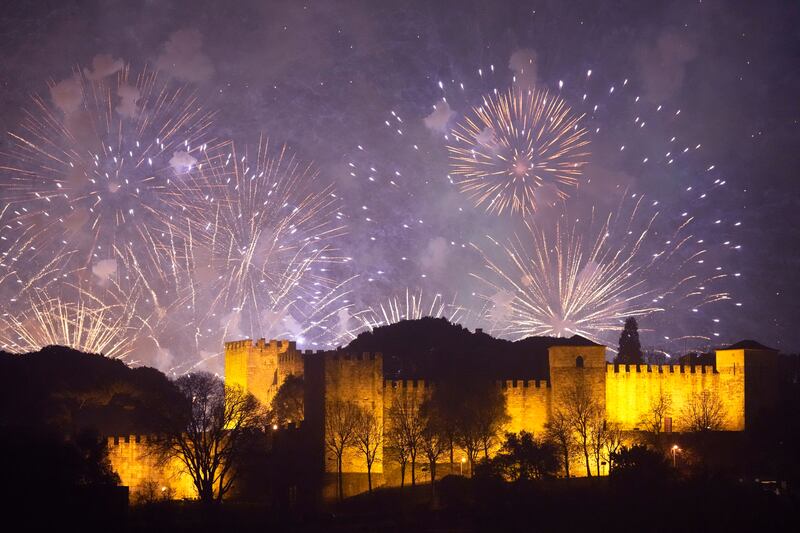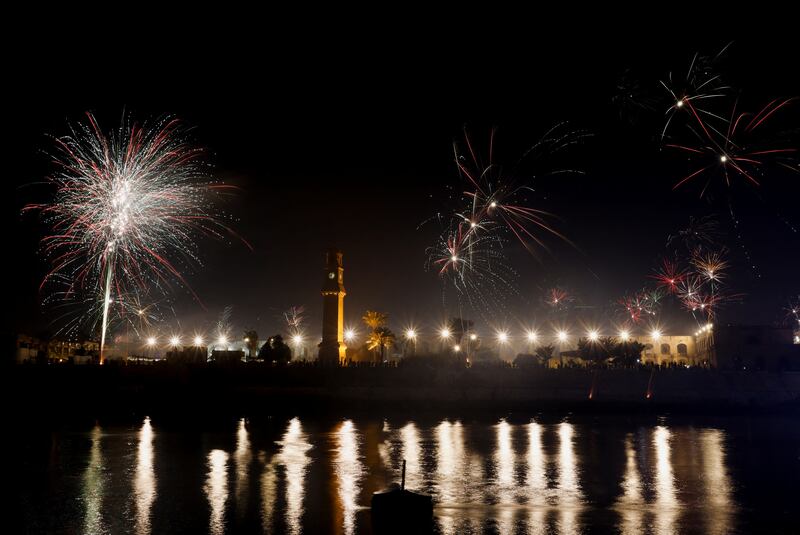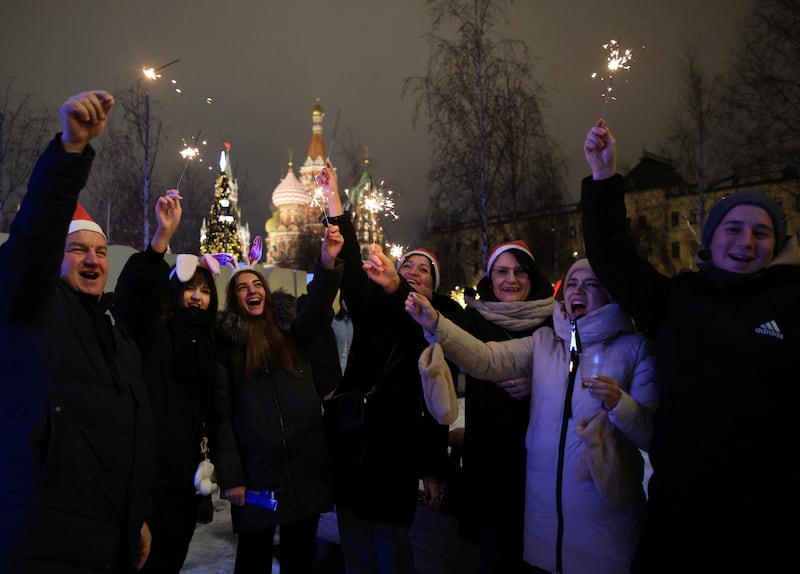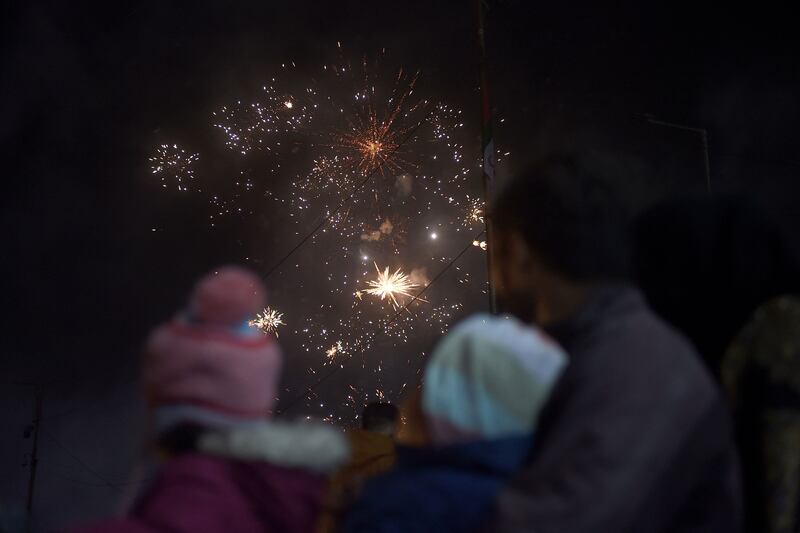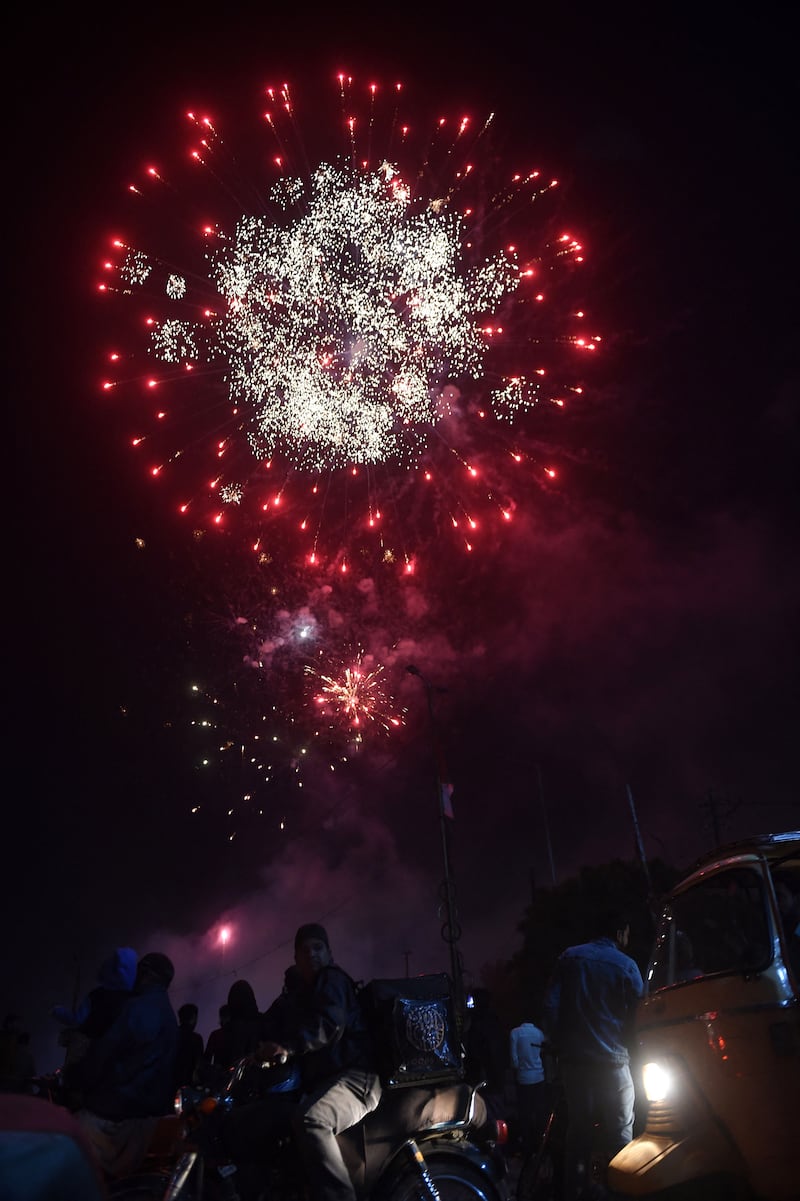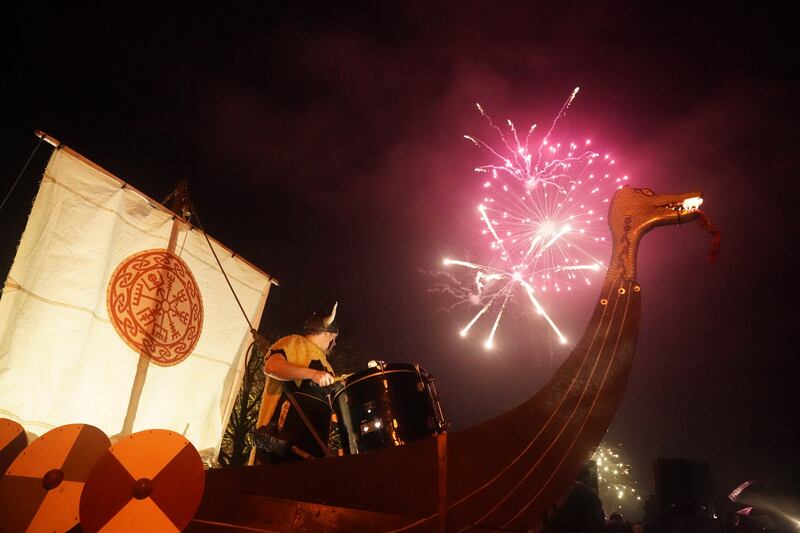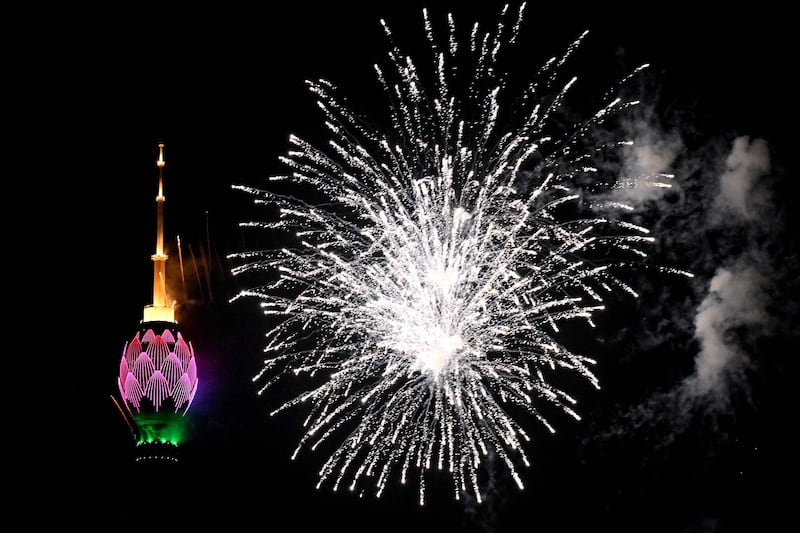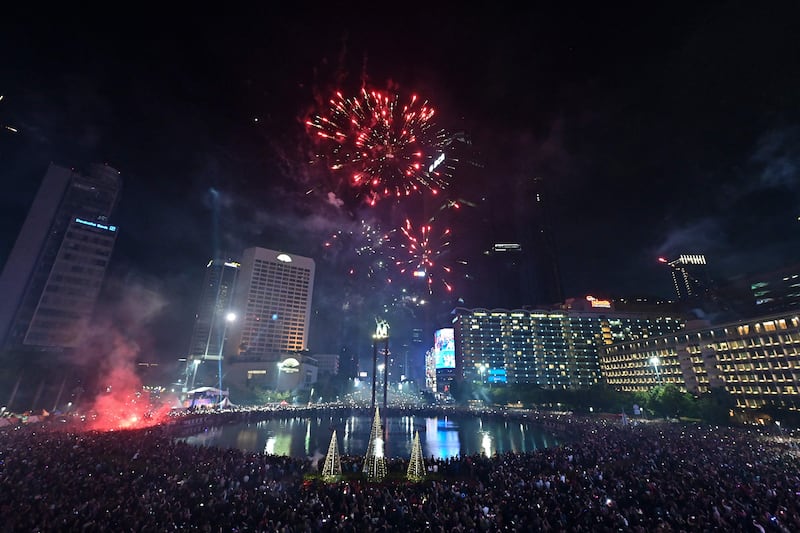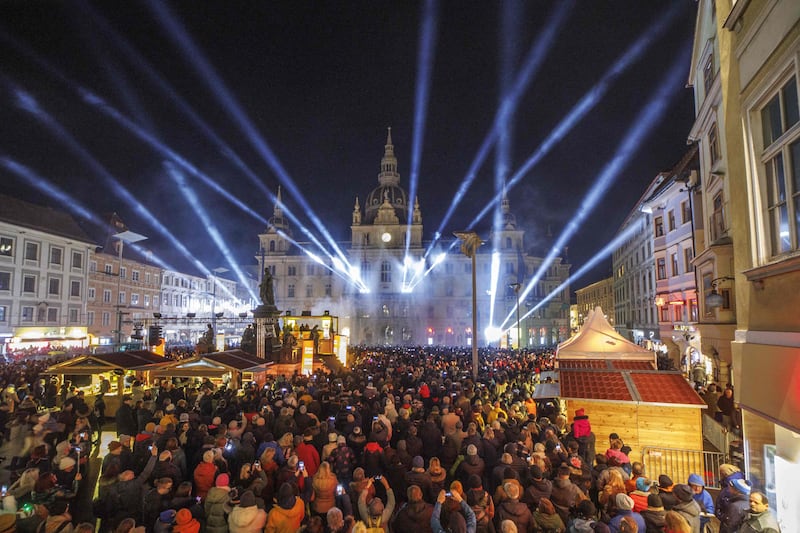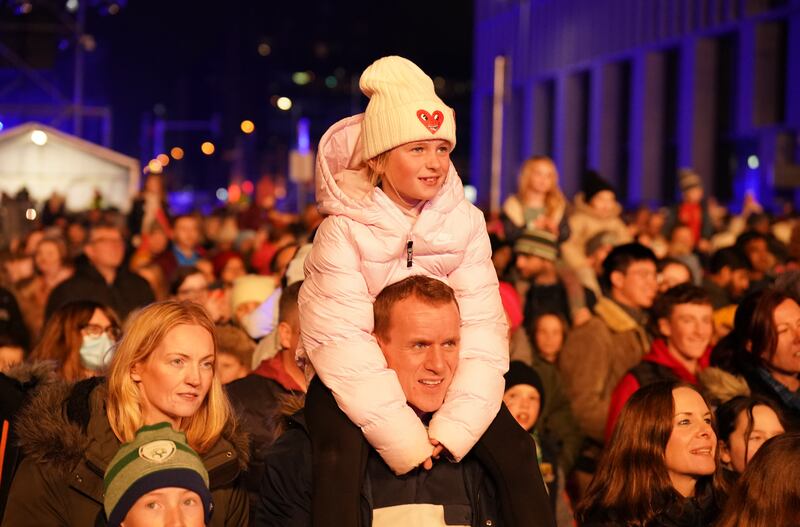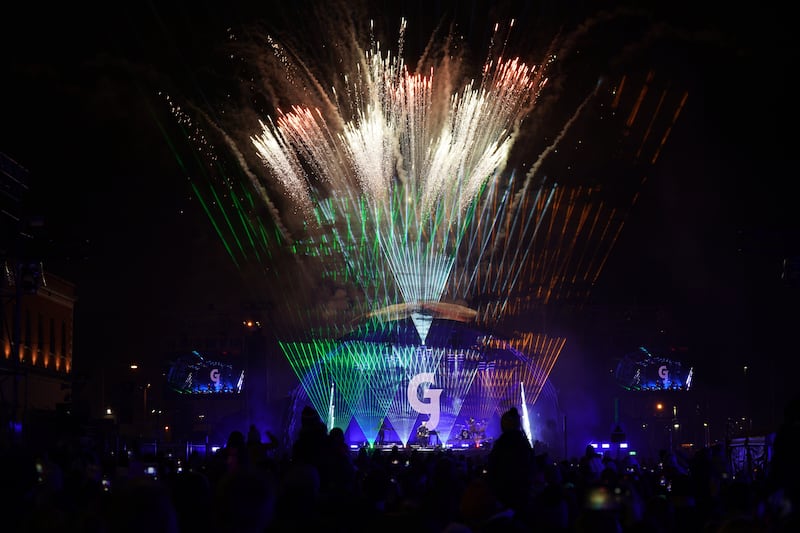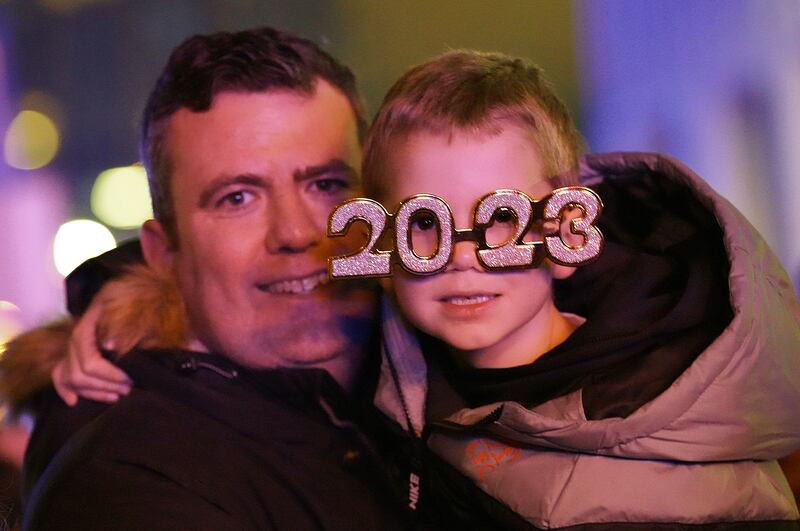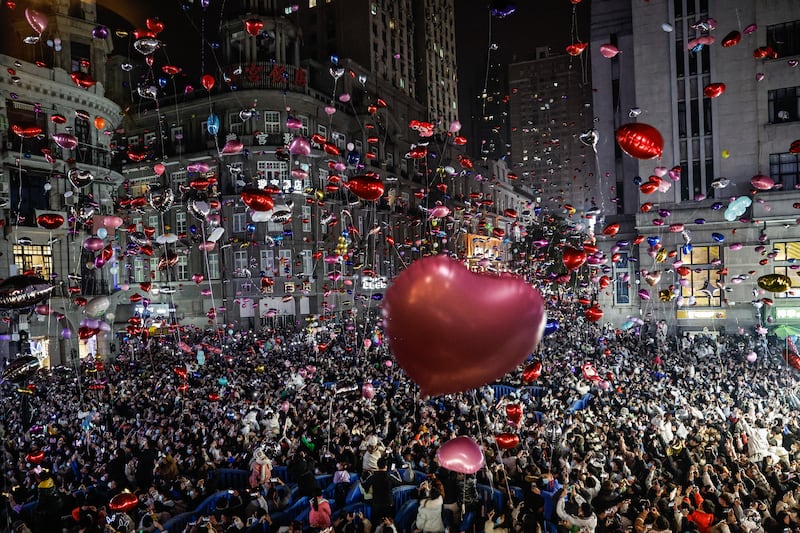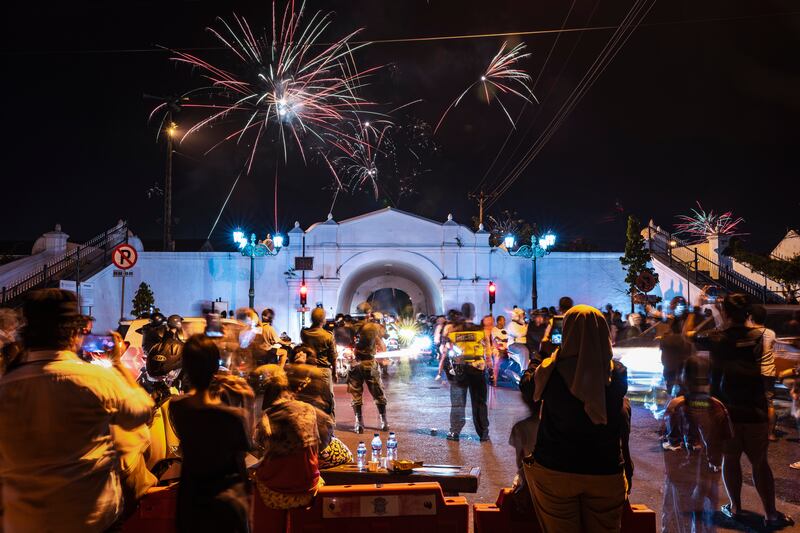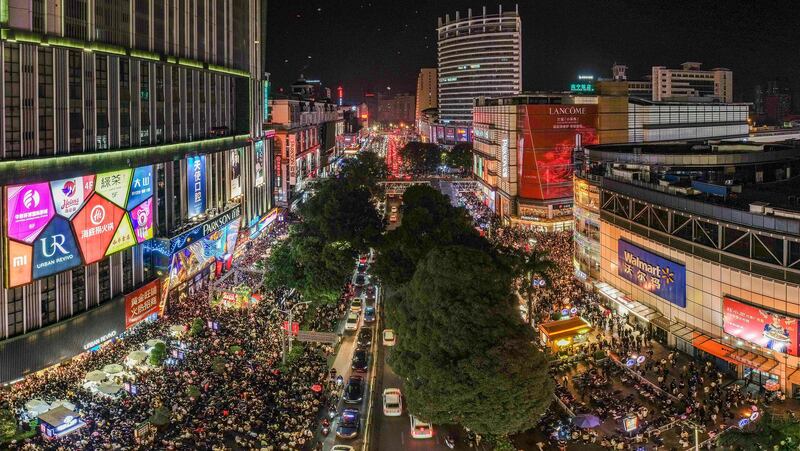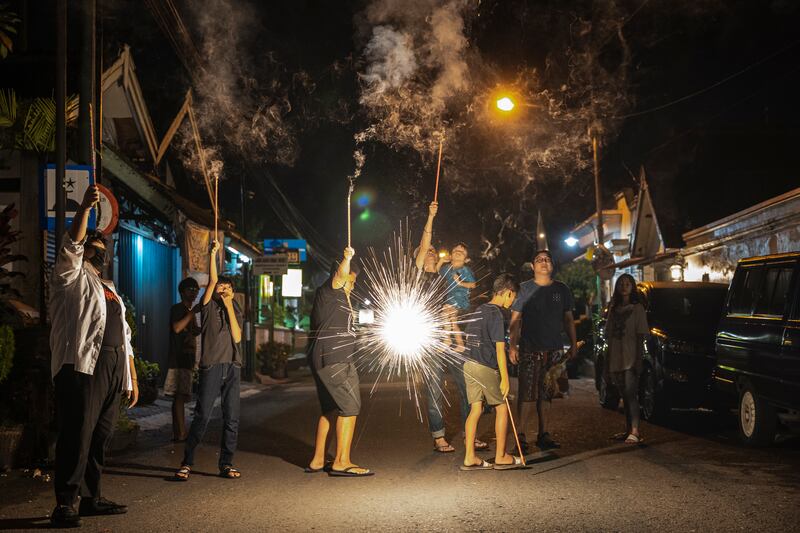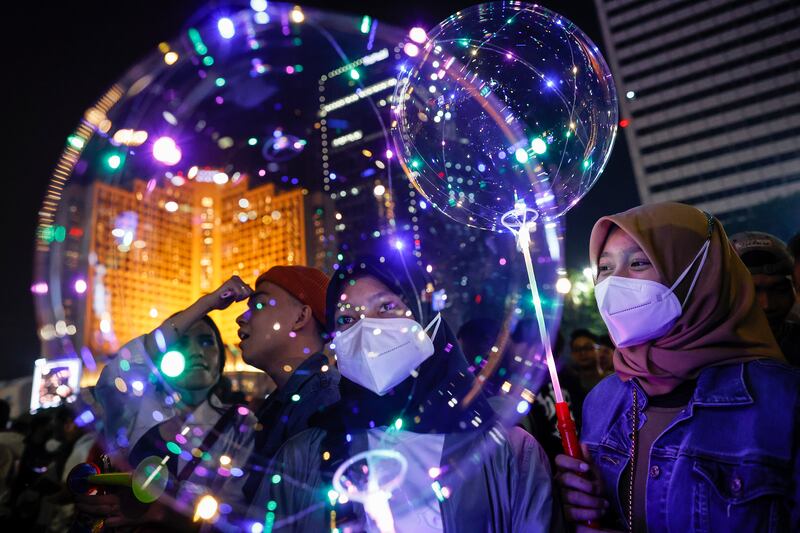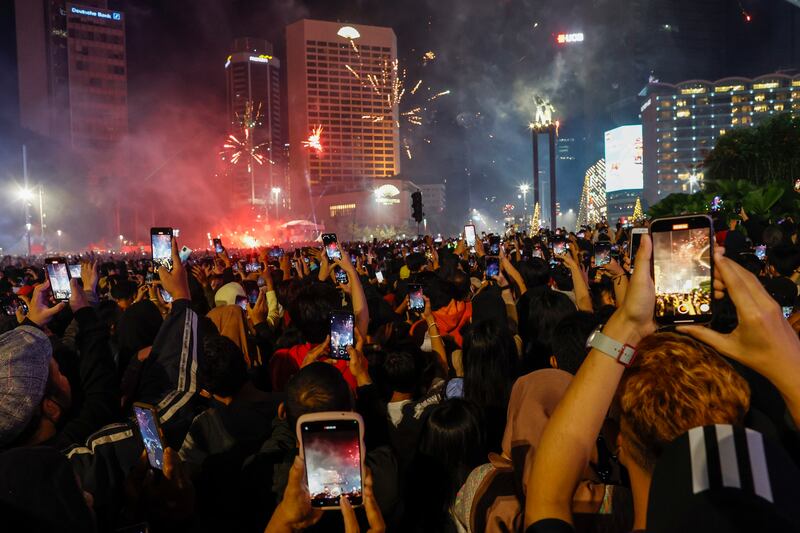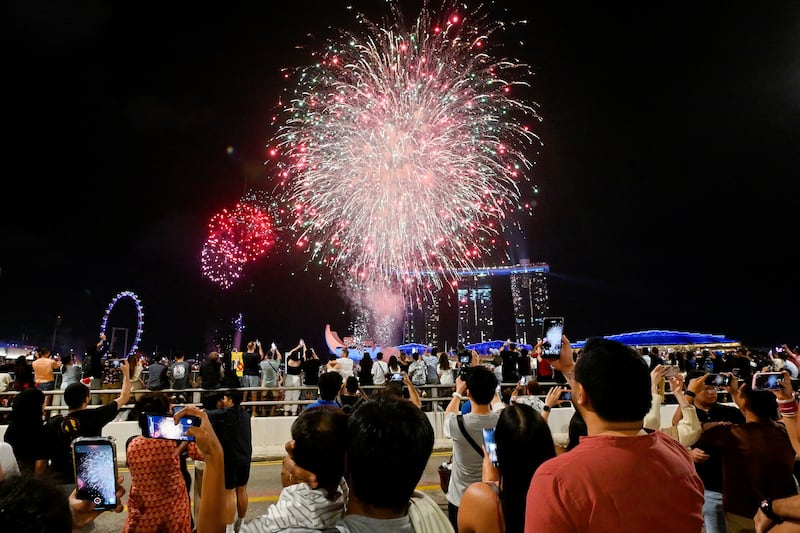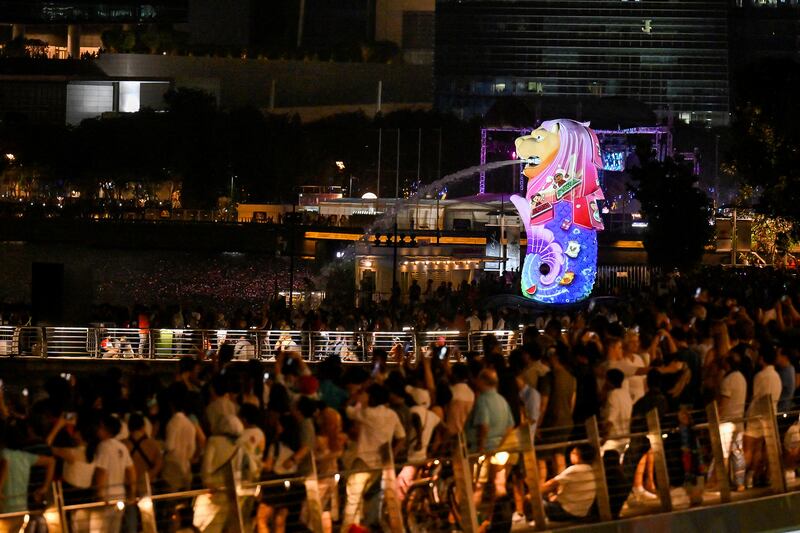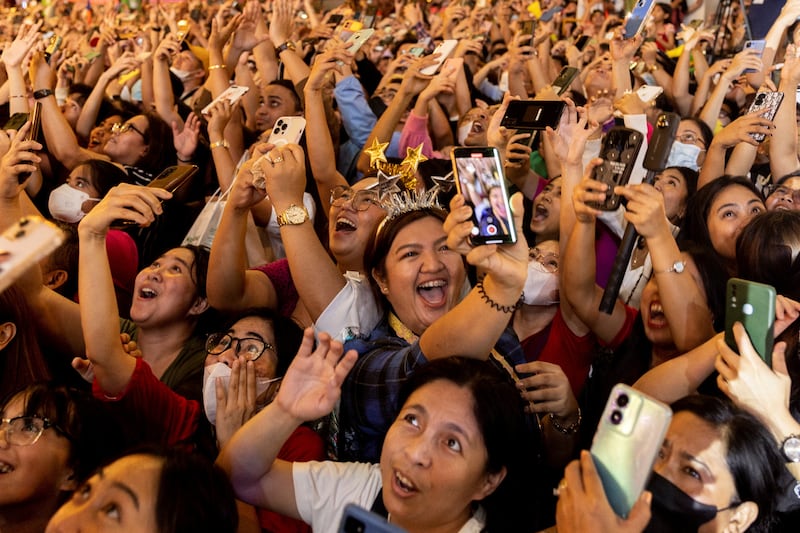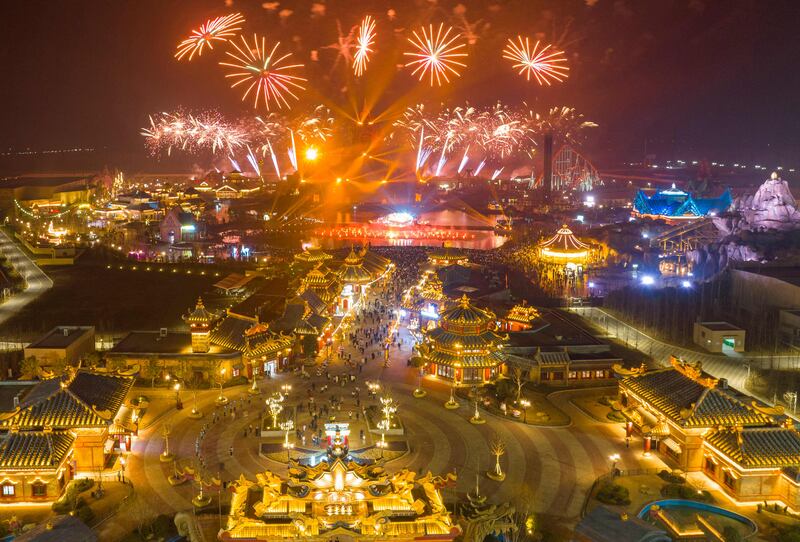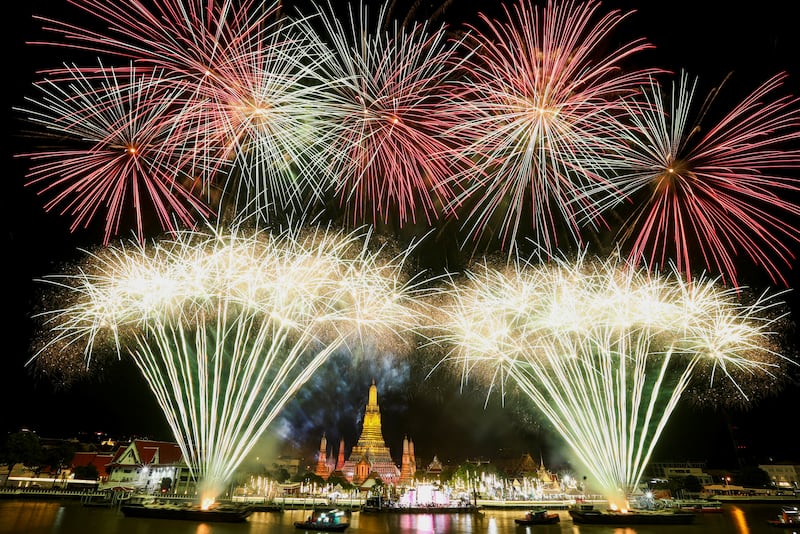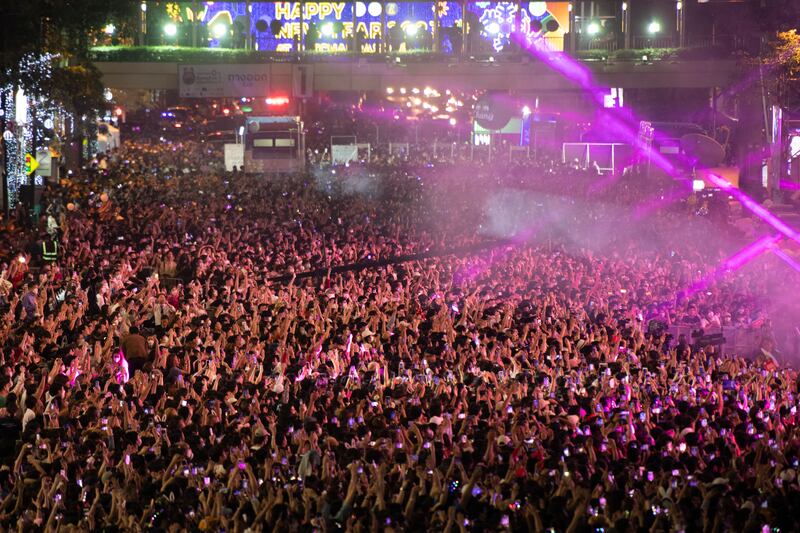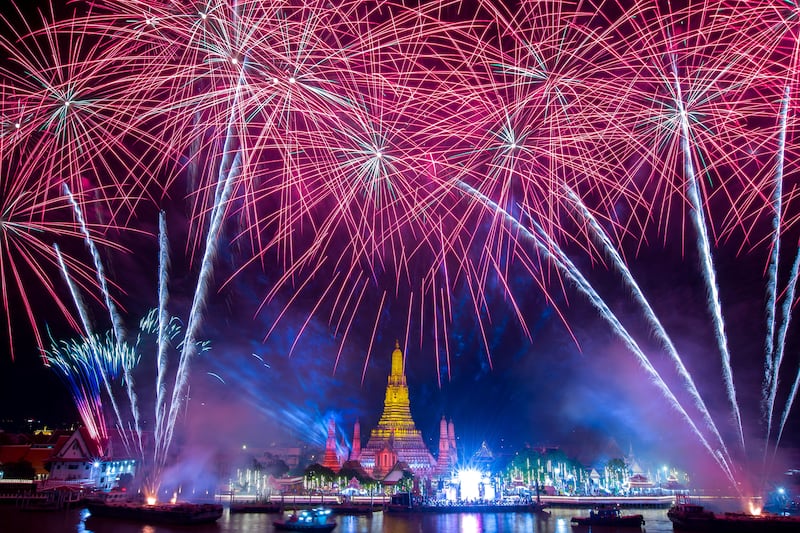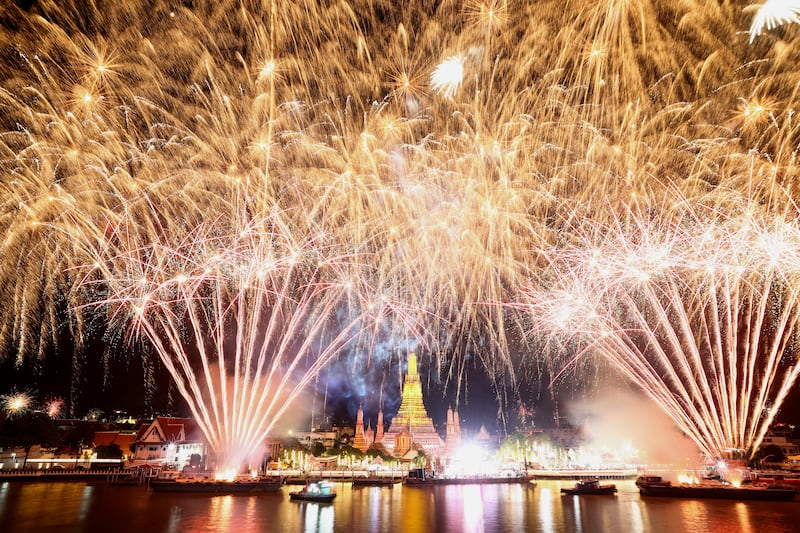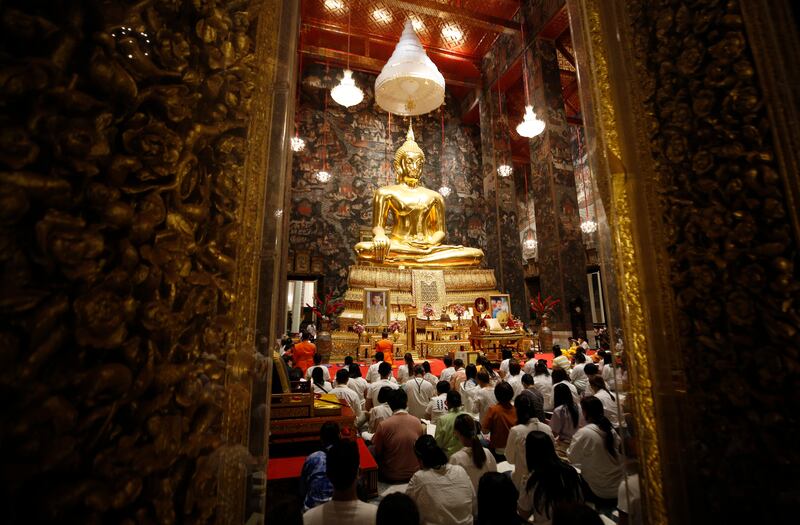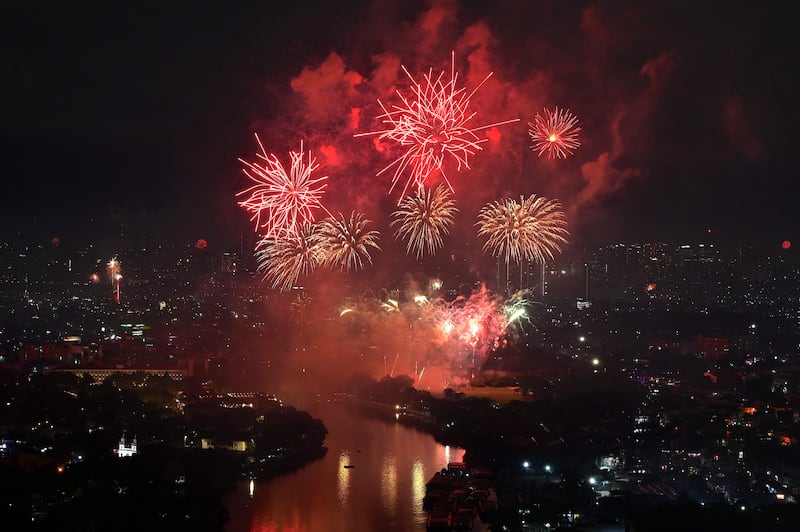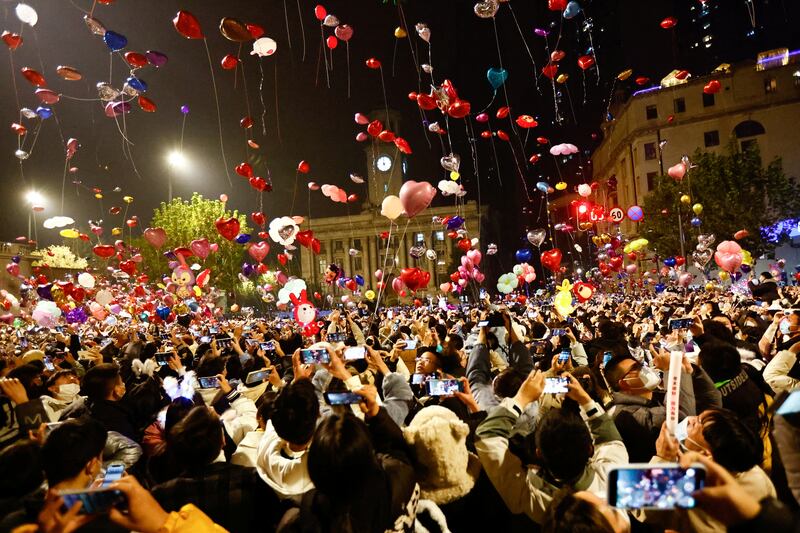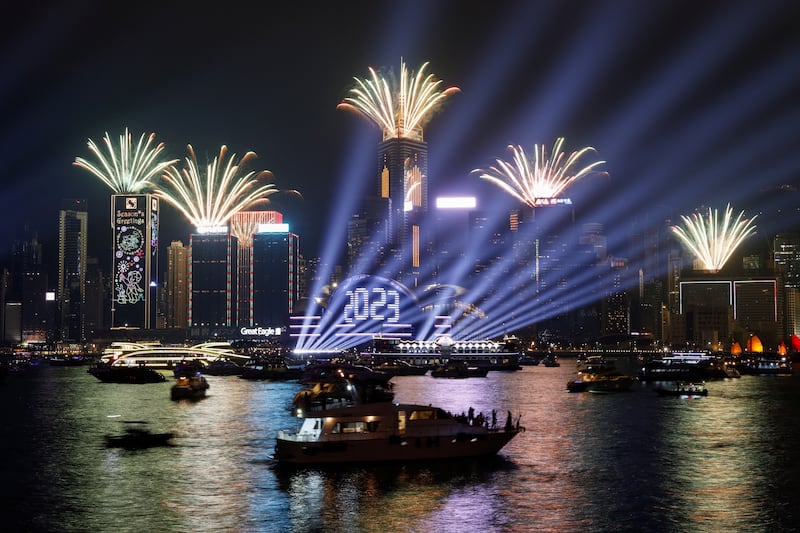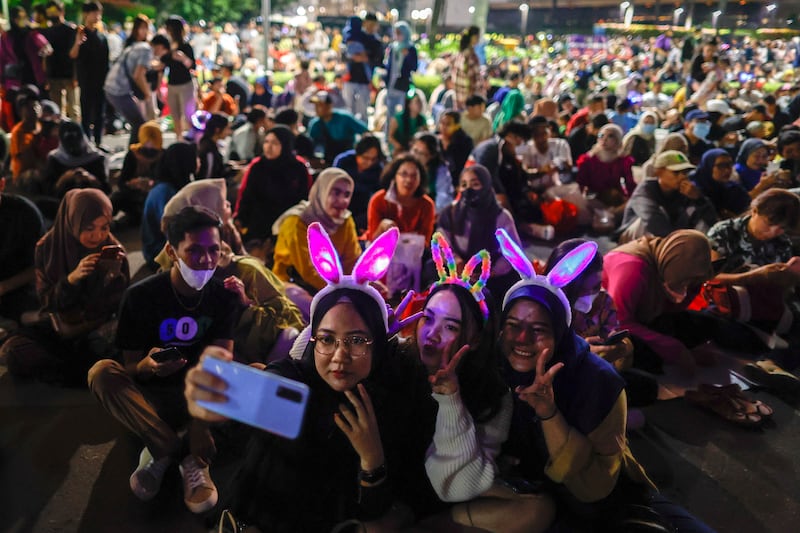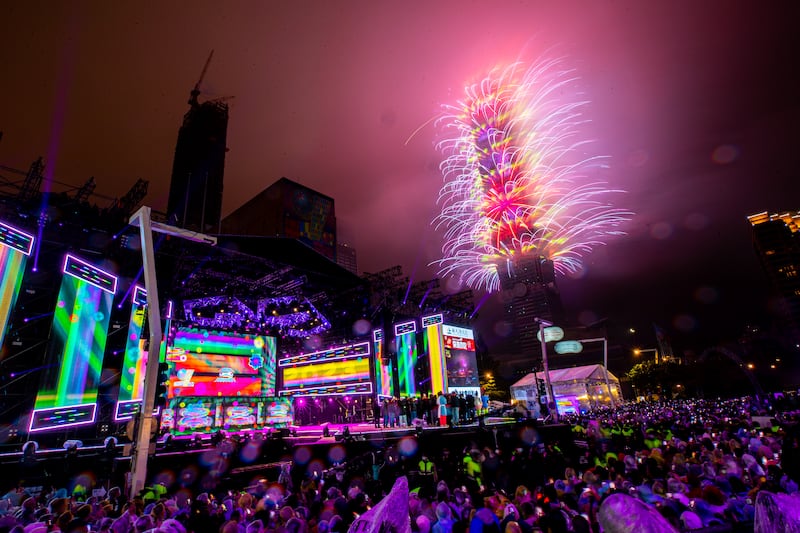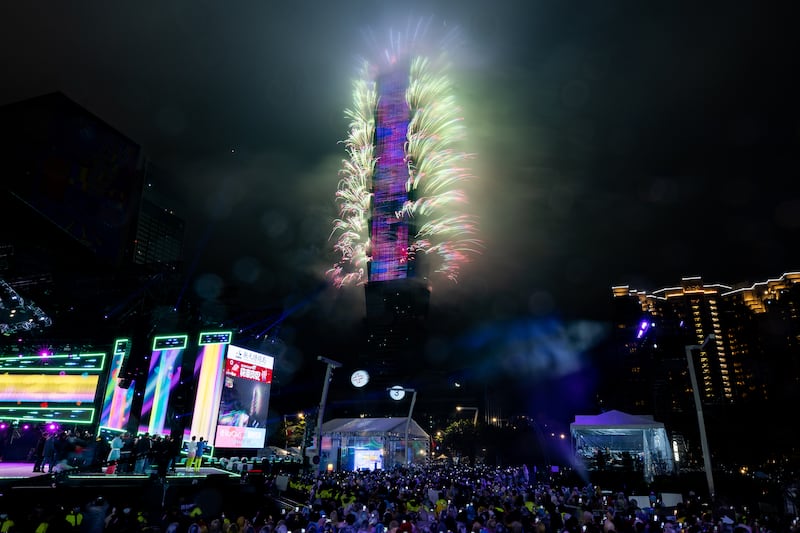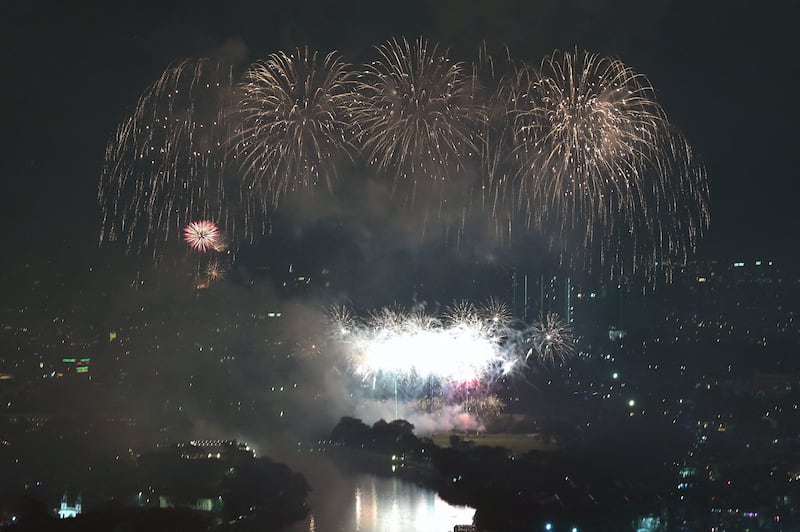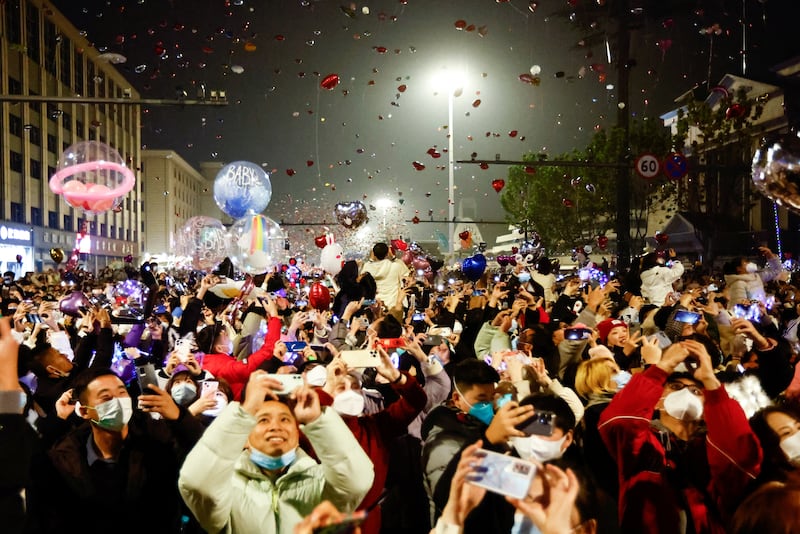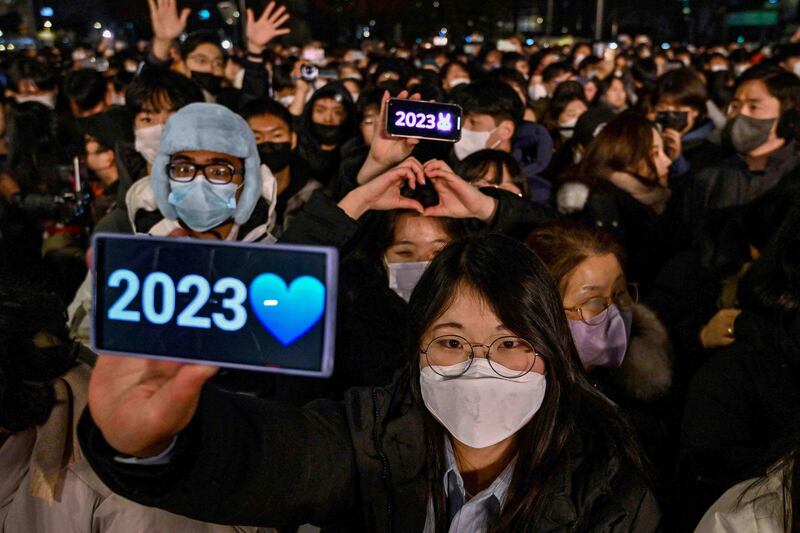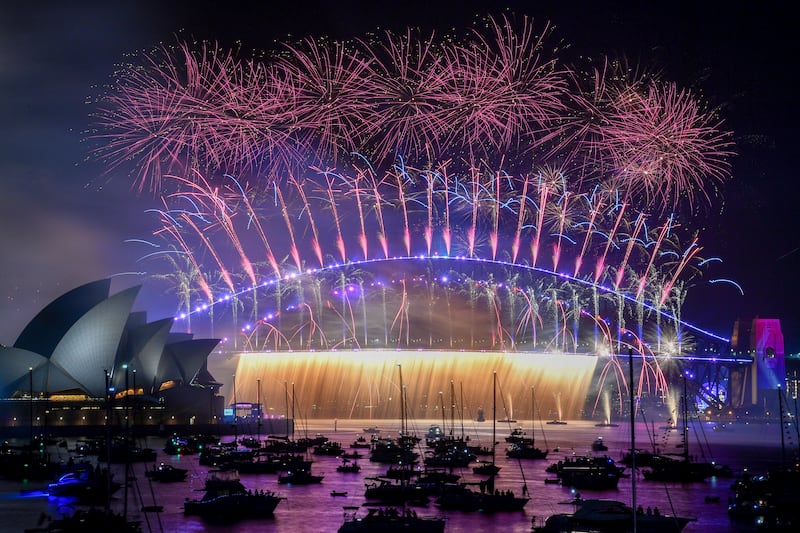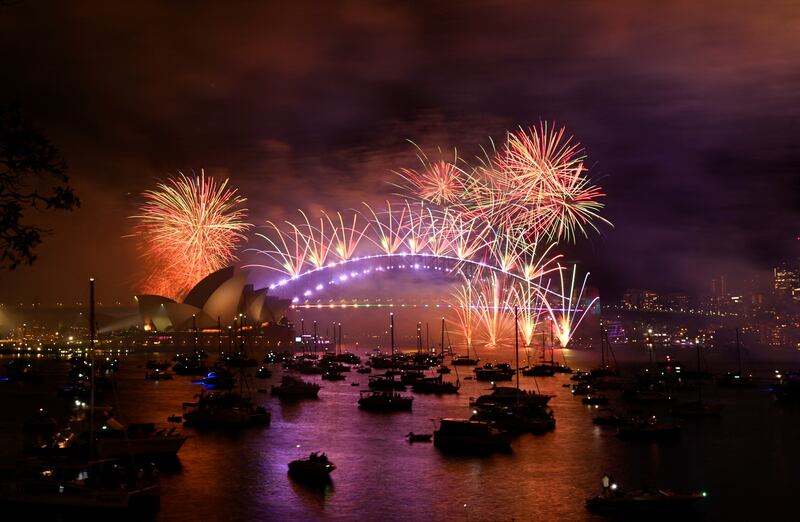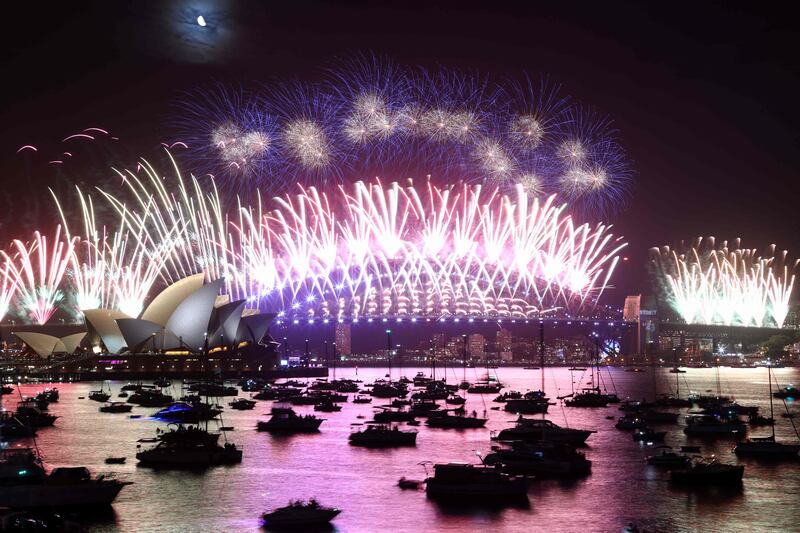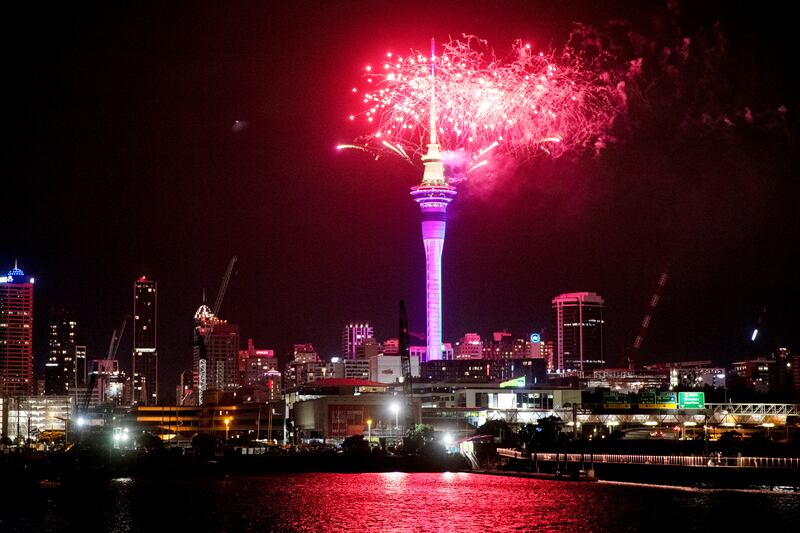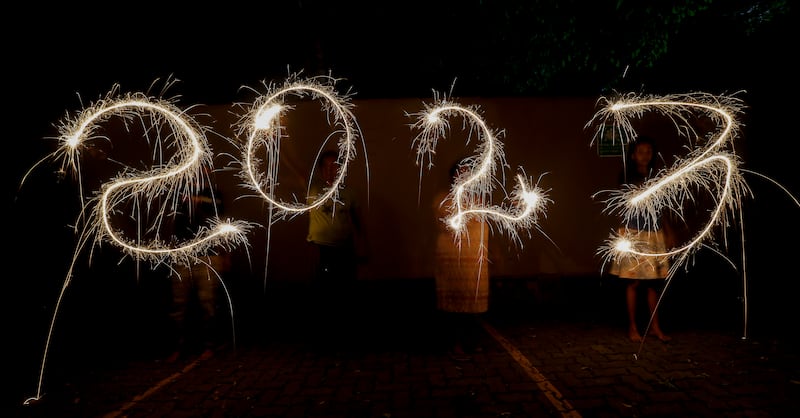The United States ushered in the new year with New York City anchoring celebrations with a dazzling spectacle at Times Square on Saturday night.
The night culminated with a countdown as a glowing geodesic sphere about 3.6 metres in diameter and weighing almost six tonnes descended from its lofty perch atop One Times Square. The ball’s surface was comprised of nearly 2,700 Waterford crystals that officials said were illuminated by a palette of more than 16 million colours.
At the stroke of midnight, a tonne of confetti rained down on revellers, glittering amid the jumbo screens, neon and pulsing lights.
Last year, a scaled-back crowd of about 15,000 in-person mask-wearing spectators watched the ball descend while basking in the lights and hoopla. Because of pandemic rules, it was far fewer than the tens of thousands of revellers who usually descend on the world-famous square.
Before the ball dropped, there were heavy thoughts about the past year and the new one to come.
“2023 is about resurgence — resurgence of the world after Covid-19 and after the war in Ukraine. We want it to end,” said Arjun Singh as he soaked in the atmosphere at Times Square.
Earlier, Australia celebrated its first restriction-free New Year's Eve after two years of Covid disruptions, as the world began bidding farewell to a year marked for many by the war in Ukraine, economic stresses and the effects of global warming.
Revellers celebrated across Europe and in Asia from China to the Philippines to Thailand.
Sydney, one of the world's first major cities to ring in the New Year, did so with a typically dazzling fireworks display, which for the first time featured a rainbow waterfall off the Harbour Bridge.
“This New Year's Eve we are saying Sydney is back as we kick off festivities around the world and bring in the New Year with a bang,” said Clover Moore, the city's lord mayor.
Lockdowns at the end of 2020 and a surge in Omicron cases at the end of 2021 led to crowd restrictions and reduced festivities.
However, curbs on celebrations have been lifted this year after Australia, like many countries, reopened its borders and removed social distancing restrictions.
A rainbow of colour lit up Sydney Harbour, with 2,000 fireworks launched from the four sails of the Sydney Opera House and 7,000 fireworks from more positions on the Sydney Harbour Bridge than before.
For the first time in 12 years, fireworks were launched from four building rooftops to frame the show, the organisers said.
Before the pandemic, more than a million people would join the festivities on the ground in Sydney as a billion spectators tuned in.
In Melbourne, Australia’s second-largest city, organisers arranged for a family-friendly fireworks display along the Yarra River as dusk fell, before a second session at midnight.
The Pacific nation of Kiribati was the first country to greet the new year, with the clock ticking into 2023 one hour ahead of neighbours including New Zealand.
In Auckland, large crowds were expected below the Sky Tower, where a 10-second countdown to midnight preceded a fireworks display.
The celebrations in New Zealand’s largest city were expected to be well-received after coronavirus forced their cancellation a year ago.
Authorities expected revellers to gather at several vantage points across the city including Devonport, which enabled a view of the festivities across the harbour.
Other features included a laser light and animation show, which took in several landmarks in Auckland.
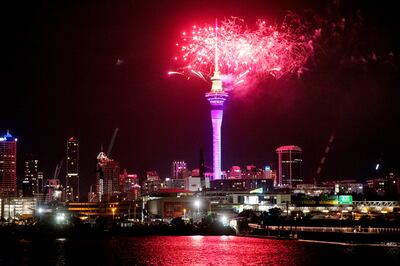
Elsewhere, the mood was not so celebratory.
Malaysia's government cancelled its New Year countdown and fireworks event at Dataran Merdeka in Kuala Lumpur after flooding displaced tens of thousands of people and a landslide killed 31 people this month.
The country's Petronas Twin Towers pared down its celebration, with no performances or fireworks.
In China, many people reflected online that a wave of coronavirus infections in December had ruined the chances of a celebratory mood.
“This virus should just go and die, cannot believe this year I cannot even find a healthy friend that can go out with me and celebrate the passage into the New Year”, wrote one social media user based in eastern Shandong province.
Others expressed hope the New Year would herald China's return to pre-pandemic life.
“I lived and worked under Covid throughout 2022 … I hope 2023 is when everything can go back to what it was before 2020,” said one user based in the neighbouring province of Jiangsu.
In the city of Wuhan, where the pandemic began three years ago, tens of thousands of people gathered to celebrate amid a heavy security presence.
Barricades were erected and hundreds of police officers and other security workers stood guard on the night of the first large-scale spontaneous gathering in the city since nationwide protests in late November — shortly after which Chinese authorities all but abandoned the zero-Covid policy.
Officers shuttled people away from at least one popular New Year’s Eve gathering point and used loudspeakers at various locations blasting out a short message on a loop advising people not to gather.
“In the interest of your health and safety do not gather or stop,” the message advised large crowds of revellers, who took no notice.
In Shanghai, many thronged the riverside walkway, the Bund.
“We’ve all travelled in from Chengdu to celebrate in Shanghai,” said Da Dai, a 28-year-old digital media executive who was travelling with two friends.
“We’ve already had Covid, so now feel it’s safe to enjoy ourselves.”
Days after Hong Kong lifted limits on group gatherings, tens of thousands of people gathered near the city's Victoria Harbour for a countdown. Lights beamed from some of the city's biggest harbour-front buildings.
It was the city's biggest New Year's Eve celebration in several years. The event was cancelled in 2019 because of often violent social unrest, and was scaled down in 2020 and 2021 because of the pandemic.
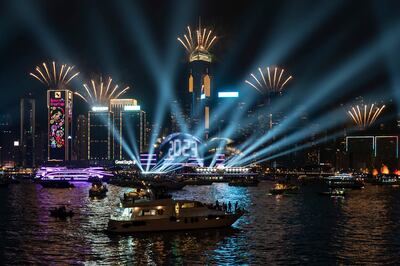
Europe was bidding farewell to a year that saw a war erupt after Russia's invasion of Ukraine in February, with no end in sight to the conflict.
Curfews ranging from 7pm to midnight remained in place across Ukraine, making the celebration of the beginning of 2023 impossible in public.
Several regional governors posted messages on social media warning residents not to break restrictions on New Year's Eve, with some even warning that the police presence on city streets would be increased at night.
“I would really like this year to be over”, said Kyiv resident Oksana Mozorenko, 35, although she said her family had put up a Christmas tree and bought presents to make it “a real holiday”.
Russia carried out a second round of missile attacks on Ukraine in three days on Saturday, Ukrainian officials said, with explosions reported across the country.
“The terrorist country launched several waves of missiles. They are wishing us a happy New Year. But we will persevere,” the governor of Kyiv region, Oleksiy Kuleba, wrote on Telegram.
Russian President Vladimir Putin devoted his annual New Year's address to rallying the Russian people behind his troops fighting in Ukraine.
Meanwhile, Paris was set to stage its first New Year fireworks since 2019.
A 10-minute firework show was set to kick off at midnight, with 500,000 people expected to gather on the Champs-Elysees avenue to watch.
Like many places, the Czech capital Prague was feeling the pinch economically and so was not holding a fireworks display.
“The main reasons include the situation in Ukraine and the unfavourable economic situation of many Prague households and the related need to seek financial savings on the part of the capital,” city hall spokesman Vit Hofman said.
“Holding celebrations did not seem appropriate.”
In an echo of sometimes violent weather extremes around the world in 2022, heavy rain and high winds on Saturday meant firework shows in the Netherlands' main cities including Amsterdam and The Hague — and the national televised display in the port city of Rotterdam — were cancelled.
But several European cities were recording record warmth for the time of year.
The Czech Hydro-meteorological Institute said on Twitter it was seeing the warmest New Year's Eve recorded, with the temperature in Prague's centre, where records go back 247 years, reaching 17.7ºC.
It was also the warmest New Year's Eve yet recorded in France, official weather forecaster Meteo France said.
In Croatia, dozens of cities, including the capital Zagreb, cancelled the fireworks after pet lovers warned about the damaging effects of noise and gases on animals and people, calling for more environmentally aware celebrations.
The Adriatic town of Rovinj planned to replace fireworks with laser shows and Zagreb was putting on confetti, visual effects and music.
The port town of Rijeka aimed to redirect funds allocated for fireworks to animal care associations, authorities said.
